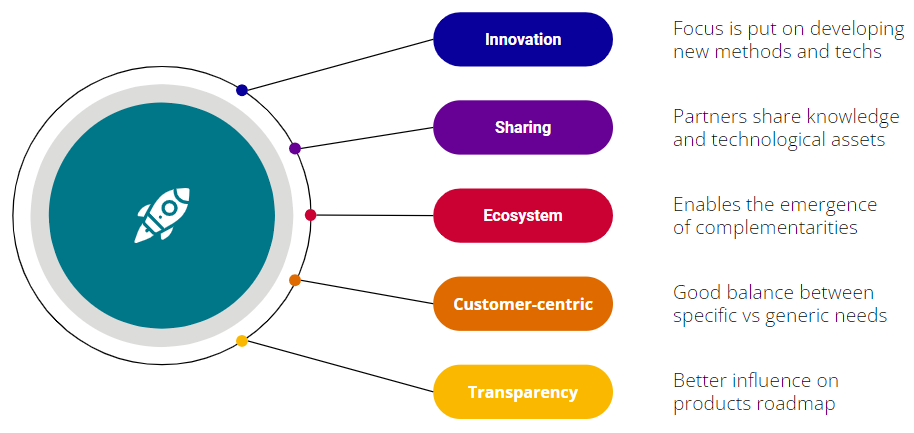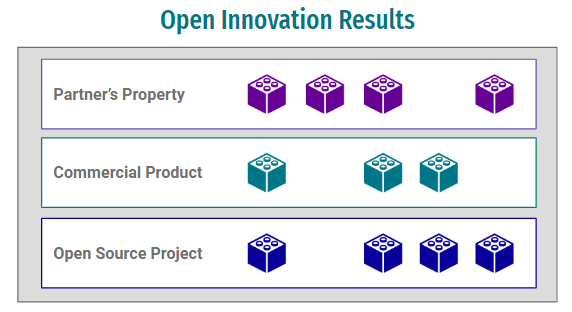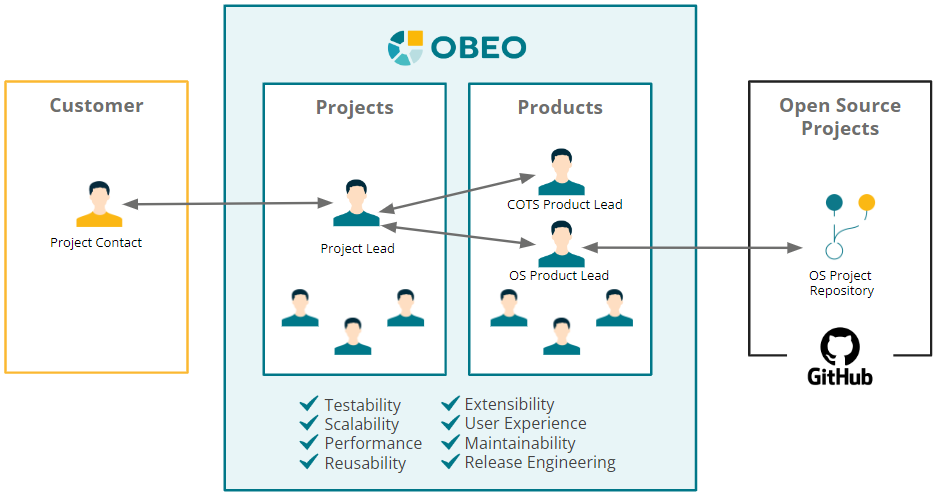At Obeo, we harness the power of Open Innovation to develop
the cutting-edge technologies that serve our customers.
Open Innovation is a collaborative approach where, together with our customers and partners, we co-create innovative solutions tailored to their specific needs. These projects are carried out in iterative cycles, in close collaboration with Obeo’s technical teams, resulting in customized solutions built on open-source projects, to which we contribute directly, or indirectly by adapting and extending them.
By sharing knowledge and resources, through open-source projects, we foster an environment that enables effective collaboration with our partners, balancing both specific and generic needs.

Open source is a catalyst for innovation. It plays a crucial role by lowering costs of robust and high-quality technologies, and fostering a sustainable, adaptable ecosystem:
To achieve these benefits, collaboration under a vendor-neutral governance model is essential.
This is why Obeo is a strategic member of the Eclipse Foundation, a not-for-profit organization that supports and strengthens an independent, open, and transparent community to foster a sustainable ecosystem.
We are proud to count around twenty Eclipse committers (who can modify source code) and several project leaders for projects such as Sirius, SysON, Acceleo, and EMF Compare.
The outcome of an open-innovation project is typically a tailored, industrial-grade solution made up of dozens of technical components. These components are not necessarily contributed to open-source projects. They may end in different receptacles depending on the benefits for the community, as well as the objectives, challenges and constraints of the partners:

At Obeo, each project developed through Open Innovation consists of three main phases:
The Open innovation project is overseen by a dedicated Project Lead. As a member of the Projects team, he is responsible for managing the project on behalf of Obeo, serving as the main point of contact for the client, and ensuring that both client requirements and Obeo's commitments are fully met.
The Project Lead directly manages a team of technical experts involved in the project and fosters seamless collaboration with the leads of the products that will incorporate some of the open innovation project’s outcomes. This ensures that developments are smoothly integrated at the optimal level and benefit from the highest level of technical expertise.
Throughout the project, our teams focus on key concerns that define all our software: testability, scalability, performance, reusability, extensibility, user experience, and maintainability, all within an industrialized release-engineering process.
